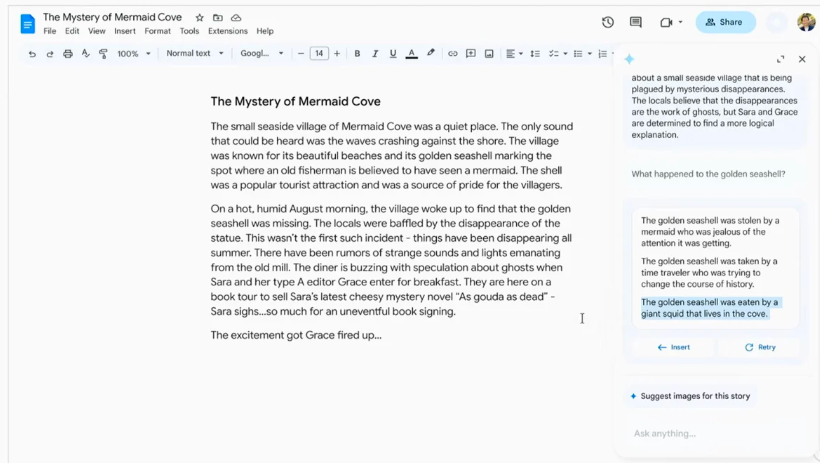AI for Architecture and Design
How can new technologies benefit the creative industries without losing the human touch?
In an era marked by rapid technological advancements, artificial intelligence (AI) continues to reshape industries across the board. People are starting to explore the possibilities of Chat GPT and behemoths like Google have announced several AI-based features in their Google I/O annual conference this year too. There’s no escaping the rise of these technologies but when it comes to the creative industries, can they play a role in content creation and more? And can it challenge traditional editorial and copywriting in both press and long-form articles?
One such area that stands to undergo a significant transformation is editorial content in the design and architecture industries. With the advent of Chat GPT (Generative Pre-trained Transformer), a cutting-edge language model developed by OpenAI, the landscape of design and architecture editorial content is poised for a revolution. How can Chat GPT change the face of editorial content in these industries?
Stick with these ideas as you read through them and read until the twist in the tale at the end…
Efficient Content Generation
For architects, Chat GPT can be an invaluable tool in content generation. It can assist in creating design proposals, project descriptions, and case studies by offering suggestions and providing relevant information. This rapid content generation capability allows architects to streamline their documentation processes, saving time and effort. Additionally, Chat GPT can autonomously generate drafts, which architects can then refine and personalise, enabling them to focus on the creative aspects of their work.
On-Demand Expertise
Architecture is a complex field that requires a deep understanding of design principles, construction techniques, and sustainability considerations. Chat GPT can serve as an on-demand expert, providing architects with access to vast amounts of industry-specific knowledge. It can offer insights on architectural styles, materials, building codes, and the latest technological advancements - what about an AI art generator? By leveraging Chat GPT's expertise, architects can stay informed about emerging trends, innovative design approaches, and best practices, enhancing the quality and relevance of their work.
Enhanced Personalisation
The personalised touch of Chat GPT is a game-changer for the design and architecture industries. By analysing user input, it can tailor responses to specific queries or preferences. This level of customisation ensures that editorial content addresses individual interests and concerns, making it more relevant and engaging. Designers, architects, and enthusiasts can receive content that aligns closely with their unique needs, fostering a deeper connection and enhancing the overall user experience.
Design Visualisation
Visual communication is a crucial aspect of architectural projects. Chat GPT can assist architects in creating compelling visual content and conceptual design. By analysing descriptions and specifications, Chat GPT can generate visual representations such as renderings, floor plans, and 3D models to help the design process. This capability allows architects to quickly explore design iterations, communicate ideas with clients, and present their vision in a visually engaging manner.
Accessibility and Collaboration
Architecture is a global profession, often requiring collaboration with teams and clients from diverse backgrounds. Chat GPT's translation capabilities enable architects to communicate and share ideas seamlessly with non-native speakers. It facilitates cross-cultural collaboration, expanding opportunities for architects to work on international projects and engage with a broader audience. Moreover, the conversational nature of Chat GPT fosters inclusive discussions, ensuring that diverse perspectives are considered in the design process.
Design Inspiration and Research
Architects often seek inspiration from a wide range of sources, including historical precedents, cultural influences, and innovative design solutions. Chat GPT can assist architects in conducting research, offering curated content and references based on specific queries. By analysing architectural styles, famous landmarks, and influential architects, Chat GPT can provide a wealth of inspiration and contextual information to support the creative process.
The Role of Traditional Editorial
While Chat GPT offers numerous advantages to architects, traditional editorial still plays a crucial role. Human-written content possesses an unmatched ability to convey the nuanced aspects of architectural projects, capturing the essence of design intent, spatial experiences, and the emotional impact of built environments. Skilled architectural writers can provide critical analysis, engage in thoughtful discourse, and offer subjective insights that augment the value of architectural content. Additionally, human editors contribute to ensuring the accuracy, coherence, and readability of architectural publications.
Plot twist
The seven paragraphs above have actually been written using Chat GPT! We know…sorry…we know we cheated…but by asking Chat GPT “Explain how Chat GPT could change the face of editorial content for the design and architecture industries and why traditional editorial still has its place”, this is what it generated. There is no denying that it is concisely written and carefully constructed and with machine learning developing at a rapid rate, this with inevitably improve. But does it lack the human touch? We feel it does!
Generally speaking, the feedback we have received anecdotally so far is that technologies such as Chat GPT can help you at an early stage to start an article in real-time, but then you manually can shape and tweak it yourself to make it sound less robotic. It’s also only as good as the information/input you give it so the more descriptive you are, in theory, the better the output.
However, these clever technologies can only do so much. They can’t visit a building and absorb the atmosphere, the acoustics, and the feeling that you get when you are there. It can’t visit a restaurant and taste the food whilst appreciating the stunning surroundings that provide a unique and wholly personal experience. Well at least, not yet!
Google steps up its AI activity
Google I/O, Google’s annual conference has recently taken place and there were some clear steps forward on the AI front.
They launched their new ‘Sidekick’ tool which offers prompts in the sidebar of Google Docs, providing contextual suggestions that specifically refer to what you are writing. An upgrade from Grammarly, but not as intrusive and all-encompassing as Chat GPT, this could be a softer step towards AI usage.
Image Credits: Google
Another tool that has started to feature on some Google phones already is the Magic Eraser tool. AI tools allow you to remove unwanted additions to your photo - photobombers, random birds, bag straps (see below for the new image generated) and so on…
Image credit: Google
And finally, Google’s AI-powered rival to Chat GPT, PaLM 2 was discussed. Frederic Lardinois, Senior Enterprise Editor at Tech Crunch said of the tool wrote, “PaLM 2 will power Google’s updated Bard chat tool, the company’s competitor to OpenAI’s ChatGPT, and function as the foundation model for most of the new AI features the company is announcing today.” PaLM 2 also now features improved support for writing and debugging code (Source: Tech Crunch).
Final thoughts
Tools such as Chat GPT have the potential to revolutionise editorial content in the design and architecture industries. Its efficient content generation, enhanced personalisation, increased accessibility, and on-demand expertise make it an invaluable tool for professionals and enthusiasts alike.
The breadth and scope of AI are going to be long-debated and are currently headlining conversations around regulations in the US right now too . How far do we take it in the design and architecture worlds? At Milan Design Week this year, Studio Snoop tested this by introducing the world’s first AI designer, Tilly. 'Amanda Talbot of Studio Snoop said that Tilly has been programmed with Studio Snoop's core values, which include "human-centred design" and prioritising nature.' Tilly is unlikely to be applying for a job at your practice any time soon (Amanda reckons nearer to 2050 would be a good time to talk more about it) but it does signal how rapidly things are changing and developing.
However, traditional editorial and content creation still plays an important role and one that we don’t think will be or should be replaced any time soon. Yes, these technologies can help us source information more efficiently but if the last few years have taught us anything, the human touch will always drive real-world design and architecture creativity.





